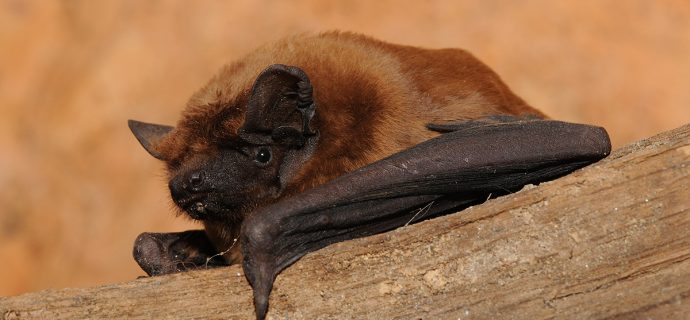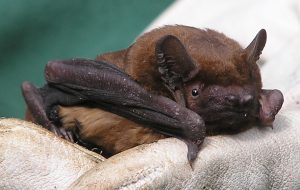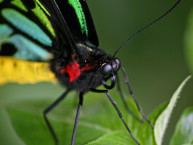
Photo: Jan Svetlik, via Flickr. Distributed under a CC BY-NC-SA 2.0 license.
Author: Mary Bates –
In laudable efforts to counter climate change, many countries around the world are turning to renewable energy sources, such as wind. Wind energy is one of the fastest-growing industries in the world, with wind turbines being installed in large numbers across the globe. Yet these efforts may come at a great cost for wildlife.
Evidence from the U.S., Canada, and Europe shows that wind turbines are responsible for an unprecedented number of bat fatalities. Estimates of bat deaths at wind turbines range from the tens of thousands to the hundreds of thousands each year.
But this does not mean we should abandon wind energy altogether. Scientists are studying how bats behave near wind farms to better understand how to mitigate the risk.
In a new study, an international team of researchers used miniaturized GPS devices to track the movements of common noctule bats (Nyctalus noctula) around wind farms in Germany. These bats hunt flying insects in open spaces and fly relatively high above ground; they also make up the majority of bat fatalities at wind turbines in Germany.
The researchers found that during midsummer, female bats made long journeys over open landscapes, repeatedly coming close to wind farms and foraging near wind turbines. They often flew at heights above ground that would put them on a collision course with wind turbines. Male bats recorded earlier in the summer, on the other hand, made short, straight trips between their roosts and foraging grounds and tended to fly lower than turbine blades. The researchers suggest that females may be searching for additional foraging grounds or mates in midsummer, and hunting insects along the way, while males in early summer follow a nightly routine of commuting to established foraging sites. All of the bats preferred areas with bodies of water, perhaps because of the abundance of insect prey in those areas.
The findings demonstrate the potential threat of wind turbines to these bats and illuminate specifics about the bats’ behavior that could help conservation efforts. The authors suggest that future wind turbines sites should not be built in habitats preferred by these bats, such as water bodies, as well as flight corridors between roosting sites and foraging grounds.
Why so many bats die at wind turbines is still a mystery, but some clues can be found in the patterns of fatalities. Most of the bats killed by wind turbines are so-called “tree bats,” species that roost in trees throughout the year and often migrate long distances. Additionally, the majority of bat fatalities at wind turbines occur during late summer and autumn. This coincides with both migration and mating season for tree bats.

Photo: Dave, via Flickr. Distributed under a CC BY-NC-SA 2.0 license.
Some studies suggest that tree bats may mistake wind turbines for tall trees. The bats may actually be attracted to the turbines as they seek shelter, mating opportunities, and insects.
Are there ways to minimize the risk to bats before turbines are built, or to repel them from existing turbines?
One of the most promising options is turning turbines down or off on low-wind nights in the summer and fall, when bats are most active. In one study, such small changes to turbine operations reduced bat deaths by 44 to 93 percent, with minimal losses in power generation. Researchers are also testing the use of ultrasonic “boom boxes” and UV light emitters to deter bats from wind turbines.
Bats rarely interact or collide with other tall, human-made structures, so it appears there is something unique about wind turbines. Scientists are currently looking at the hypothesis that bats are attracted to wind turbines, as well as determining the optimal times to run wind turbines so that they don’t interfere with bat migration patterns. Even more basic research also needs to be done – population estimates are needed to get a sense of what proportion of different bat species are killed by wind turbines.
Wind power holds great promise for future renewable energy production. A better understanding of bat populations, habitats, and behaviors will help us grow wind energy without so many needless bat casualties.
-Source: Mary Bates is a freelance science writer based in Boston. She has written for such publications as National Geographic News, New Scientist, and IEEE Pulse magazine. Mary received her PhD in psychology studying bat echolocation at Brown University.















